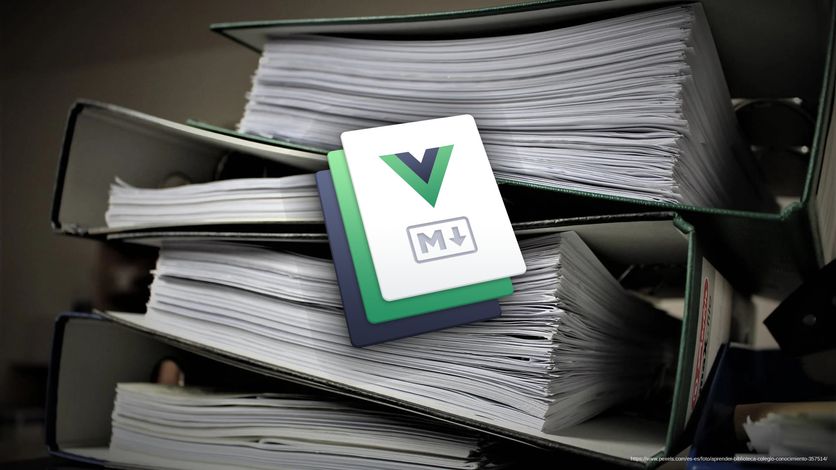What is VuePress and why you should use it to document your project?

VuePress defines itself as a Vue-powered Static Site Generator. In other words, is a tool to create static sites. A static site is a website where nothing runs on the server. The server only takes care of return the file (HTML file) as is stored in the server.
Is the opposite of a dynamic site, like for example a PHP webpage, in that case, your browser makes a request to the server, and the server executes PHP code that, for example, get a post from a database, process it, put that post in an HTML template, etc and returns the result to the browser.
What’s better dynamic or static?
This is not the goal of this blog post, but I will say: ‘It depends’. There is no “magic” answer: the best type depends on the use case.
What does VuePress?
With VuePress you can create content in markdown files and when you generate the website every markdown file will be converted to an HTML page.
VuePress also provides you other content-relates features:
- Menus
- Search box (yes, works even as static website)
- Markdown extensions (that will make your life easier)
- etc.
We will come back to these elements in a moment, but first, we will learn how to start a VuePress website
Creating a VuePress website
It’s very easy, just:
yarn create vuepress [project-name]
cd [project-name]And then, to start the dev server yarn docs:dev.
(This command starts a local dev server, by default, on http://localhost:8080
At this point, you can create content just creating markdown files in docs folder
If you create a file named my-content.md you could access it in http://localhost:8080/my-content.html
(If you want to serve a default page a.k.a http://localhost:8080/ the filename should be `README.md)
You also could create folders in docs/ and folder name will be in the URL of that content. For example: docs/blog/README.md will be served at http://localhost:8080/blog/
Markdown extensions
VuePress provides markdown extensions add more features than “standard” markdown provides.
For example:
- Write Github-styled tables: You can create tables in markdown just writing something like:
| Col 1 | Col 2 | Col 3 |
| ------------- |:-------------:| -----:|
| Content col 1 | Content col 2 | 1234 |- Frontmatter support: Frontmatter is a way to add YAML content in a markdown file, to set content metadata, for example, the title, the language, etc )
- Emoji support: 😂 Nothing more to say
- ToC (Table of contents): A very useful extension, you only need to add
[[toc]]in your markdown, and it will be rendered as a table of contents (a tree of document headings) - Vue components: You can add Vue components directly in the markdown. That is very useful for main the VuePress’s use.
Go to https://vuepress.vuejs.org/guide/markdown.html for further information
VuePress as documentation generator
Applications and uses are infinite, but VuePress is a very simple but powerful tool to create technical documentation.
Most of Vue ecosystem uses VuePress to create their documentation websites: Vue.js, Vuex, Vue Apollo, Portal Vue, Vue ChartJs, etc…
I think this simplicity makes easy the task of creating your project documentation.
Using in an existing project
I think is a good idea to keep your project and its documentation together, and with VuePress is possible to do it.
In your project, you only need to add Vuepress as development dependency, that’s all
yarn add vuepress -DAnd edit your package.json to add the following items in the scripts section to start dev server and build documentation.
...
"scripts": {
...
"docs:dev": "vuepress dev docs",
"docs:build": "export NODE_ENV=production && vuepress build docs"
},
...Advantages
- Keep the documentation together with the code makes it easier for developers to read the project documentation and update it, because it is near to the code.
- As documentation is markdown, you can still be reading it even without use VuePress, for example in your IDE or in GitHub.
- You could insert your project’s Vue components in the documentation to create a “playground”, for example, to demonstrate how your component change if you change some property. Like Buefy does in its documentation
- VuePress is themable and highly configurable, you can do advanced things, but you can start to write and serve docs in a few minutes.
Other VuePress uses
Create technical documentation website isn’t the only VuePress use case, you could use VuePress to create a blog Example, or a simple webpage but, unless it is something very simple, i think VuePress is not the best tool.
VitePress
At this moment, Evan You, VuePress and Vue.js creator is working on Vite, a build tool that uses native ES Module imports and promises be very fast, and over Vite is creating too VitePress, a VuePress brother built on top of Vite, that will have some improvements over VuePress, to highlight Vue 3 usage and faster dev server and build and with lighter page weight.
Summary
If you need to serve your project documentation VuePress is a good option to do that.
 Sergio Carracedo
Sergio Carracedo